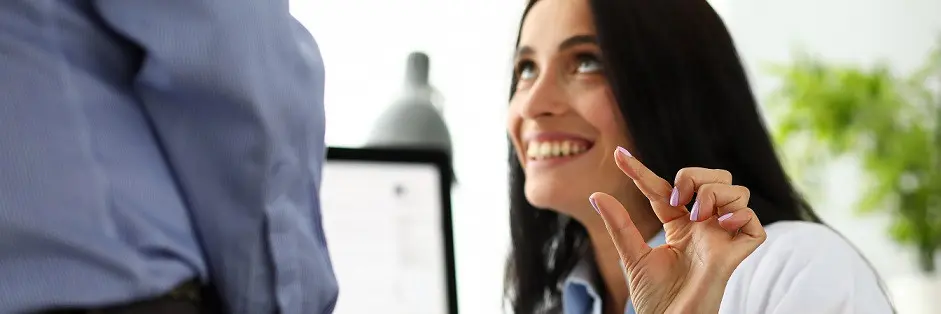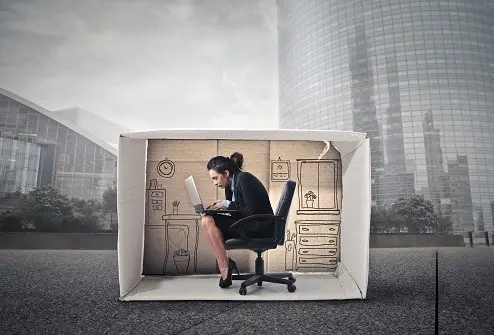SHOW GREATNESS - TINY HOUSES

ARE TINY HOUSES ALLOWED IN SWITZERLAND?
It would be great if you could just set up home anywhere in Switzerland - but that's not the case. Like any other house, a stationary tiny house also requires a building licence. Each canton and each municipality has its own rules. To avoid complications later on, it is always best to consult with your municipality before building a tiny house. The authorisation depends on the building regulations of the municipality and where the plot is located. It is also possible that there are design regulations for stationary tiny houses. A Tiny House with foundations must also be erected in a residential zone. Due to the Spatial Planning Act, it is not permitted to erect such a residential building outside the building zone (e.g. in the agricultural zone) - this is analogous to caravans or inhabited construction site trailers.
So, if you want to build a stationary Tiny House with a foundation in Switzerland, you need a permit and a piece of land. The requirements for authorisation vary from canton to canton. It is best to enquire about the regulations with the local authorities right at the start of the project.
Yes, tiny houses are permitted in Switzerland. This type of living has advantages and more and more people are opting to simplify their lives, but there are also some disadvantages that need to be considered. In Switzerland, as a nomad you are not allowed to simply settle wherever you like. Living in a different way.
A stationary Tiny House is also subject to authorisation in Switzerland. The regulations of the cantons and municipalities apply, which may vary. The basis for authorisation is the applicable municipal building and zoning regulations. Sometimes there are design regulations for the Tiny House.
CAN I PUT A TINY HOUSE ON MY PROPERTY?
The 'small house movement' comes from America. The trend towards living on just a few square metres. Tiny houses are the name given to these reduced, partly stationary or partly mobile homes. The movement is gaining more and more followers - including in Switzerland. Where can tiny houses be built? You can set up a Tiny House on your own property, on campsites and in holiday resorts without planning permission. However, the condition here is that it is a mobile house on wheels and that it is not permanently inhabited. Sustainable living and realising the dream of owning your own home: You've come to the right place. Tiny houses are also becoming increasingly popular in Switzerland. Not just for holidays. Living in a tiny house has something very special despite the reduced living space and can be a particularly sustainable form of living. Quite apart from that, there are practical tiny houses with wheels for mobility.
HOW BIG IS A TINY HOUSE?
Tiny houses are between ten and 55 square metres in size, originally have a conventional shape with a pitched roof and are often mounted on wheels. In times of rising rents, alternative housing models are becoming increasingly interesting.

ECOLOGICAL ADVANTAGES OF THE TINY HOUSE
They are very small houses - not just as an occasional eye-catcher on the campsite, as a garden shed or holiday accommodation. In some cases, they are also coming into focus as owner-occupied homes, but when it comes to sales, these offers meet with significantly less demand than classic residential property.
In times of exploding rents and a huge housing shortage in large cities and conurbations, interest in housing is growing, but mostly as long as it is newly built and not yet occupied. The situation is different in the second-hand market. Although curiosity has been aroused in many municipalities and plans for special tiny house developments are underway, there are still many questions surrounding resale.
Whether mobile or fixed to a standing place, a tiny house not only saves a lot of space, but is also usually powered by renewable energy such as solar panels. Owners of tiny houses live more economically, as there is simply no room for nice-to-have purchases. The houses are also built using sustainable materials - not least because the tiny house movement emphasises environmentally friendly and resource-saving construction methods.
Nonetheless, the circumstances are different for resales than for traditional property sales and there are various factors to consider, such as the following.
- Investments, advance payments
- Selling price and resale
- Increase in value?
- Maintenance/provisions
- Legal basis / authorisations
- Contract / Handshake
We at WENET - Wealth Investment Network AG will be happy to advise you in a personal meeting on what to look out for before making such an investment or when selling one and to ensure that no mistakes are made.
The disadvantages are obvious and there are other negative points that are not or only rarely reported. You can find our experiences here:
- Financing often difficult
Not only is it often a challenge for future residents of a tiny house to find a suitable parking space in every respect, the financing is also often a challenge. The price, which is usually in the mid five-figure range, is lower than for a conventional house. However, it is not so easy to get a loan for the tiny house. The problem: Tiny Houses are often mobile and therefore not firmly anchored in the ground, which is why, according to the law, no land charge can be entered in the land register as there is no security.
- Little space
Exciting at first glance - after a year it looks completely different and you feel cramped and lack the simplest of things - storage space! If there's one thing that's clearly lacking in a tiny house, it's space. This becomes apparent at the latest when there are two people living in it and becomes a challenge when children are added. Not everyone succeeds in making this major adjustment. Receiving and accommodating guests is also only possible to a very limited extent, basically only during the summer months. Sleeping places are usually very rare and hardly allow any visitors. But it's not just your own lifestyle that needs to be reconsidered, but also your own possessions, which should ideally be as minimalist as possible. If you are planning to move into a tiny house, it must not exceed a certain maximum weight.
- Noise, odours, chaos - disorder
Anyone who talks on the phone, listens to loud music or cooks with lots of flavours will inevitably share this with other people living in the mini household - whether they want to or not! But where there is little space, there is also little that can be hidden and catered for. And the fact that there is no separate entrance area in the tiny house like in a conventional home is also a certain annoyance.
- Cleaning, wiping, vacuuming
Smaller means quicker to clean, but also quicker to clean and quicker to get dirty! Every time you enter the tiny house, dirt collects on the floor very quickly, which then usually spreads (more) quickly. Regular sweeping is therefore part of everyday life in a tiny house, sometimes several times a day.
- Special room programme
Getting up quickly in bed or descending to the lower level can result in occasional bumps or scrapes, especially in the early days. The sleeping area in a tiny house is often located on a kind of mezzanine, which is usually less than one metre from the ceiling. And if stairs are integrated instead of ladders, they are often designed in such a way that they overlap another room element such as a kitchen cupboard. In addition, the special design within a tiny house, but even the entrance area alone, is usually not barrier-free and therefore rather unsuitable for older or disabled people.
- Mobile can be an advantage but also a disadvantage
Being independent, flexible, but above all mobile with a tiny house - all of this offers advantages and disadvantages. First of all, you need to find a suitable new location that fulfils all legal requirements. This is because not every country in Switzerland is authorised for habitation.
- Beautiful in thought, live is reality
Who doesn't dream of nature and living in the countryside? Living in a tiny house means living with nature - and there are advantages and disadvantages to this too. Because there is not the protection of the outer membrane as in a conventional house and there is basically only one room, any kind of precipitation is always very loud and very audible. In addition to the particular background noise, the climatic conditions at the appropriate time of year can also prove to be a challenge. A frozen pipe is often a problem in winter. And if the type of insulation has not been considered carefully enough, the worst that can happen is that unpleasant cold, especially that coming from the floor, is permanently present. In summer, on the other hand, there is a risk that the small house will heat up very quickly. Of course, opening all the windows in the house can help to ensure a constant flow of air. However, this also means annoying insects such as midges, flies and spiders.
To save energy when heating, there are the following simple basic rules:
- Only preheat the oven if absolutely necessary! Rather pay attention to good time management so as not to need it. It is also better - if both functions are available - to use the hot air function, as in contrast to bottom and top heat, it is possible to make do with approx. 20 degrees less. It also makes it possible to use several trays at the same time, for example.
- The pots and pans on the electric hob should match the respective hob (no small pot on a large hob!). Using matching lids on the pots and pans also saves energy.
- If you need hot water (e.g. for pasta, etc.), heat it in the kettle first before pouring it into the pot. This saves time on the one hand and a lot of energy on the other!
The following options are available to save energy for cooling:
- Allow warm food to cool to room temperature before placing it in the fridge. This saves energy during further cooling.
- The following applies to cooling appliances (refrigerators, freezers): the lower the temperature, the higher the energy consumption. The optimum temperature for refrigerators is between 5 and 7 degrees, for iceboxes/freezers -18 degrees.
- Also pay attention to any ice formation: the more ice there is, the higher the power consumption. As a rule of thumb: 1 cm of ice corresponds to 10% more electricity consumption. Therefore, defrost the appliances regularly.
Last but not least: Some appliances even consume more energy in standby mode per year than for actual operation. Therefore, switch off everything that is not currently being used. Often - e.g. televisions with audio systems, children's games consoles, etc. - it also helps to plug in a multiple plug that can switch all devices on and off at the same time. This simple measure can save a lot of electricity, which will make your wallet happy at the end of the year.

